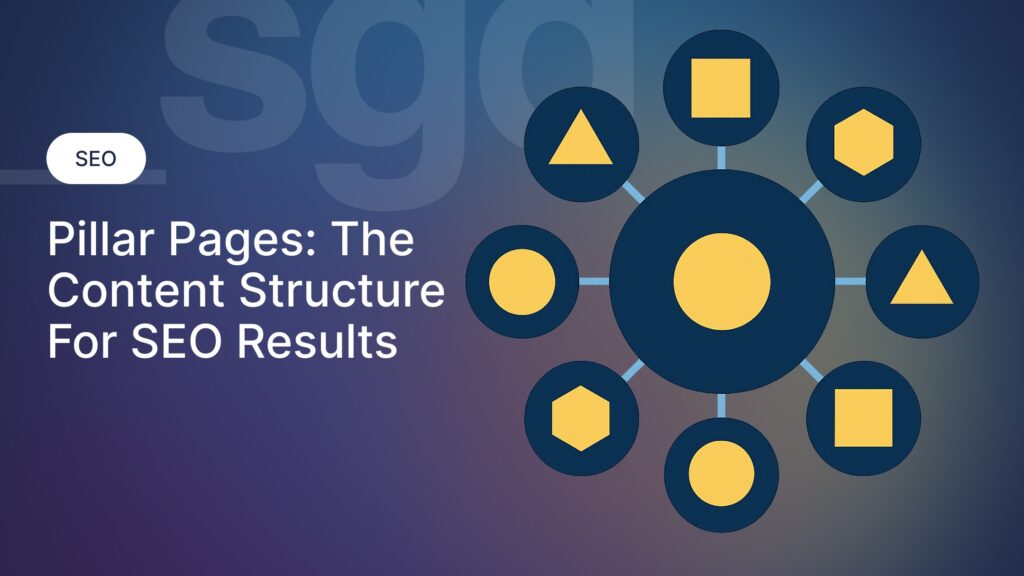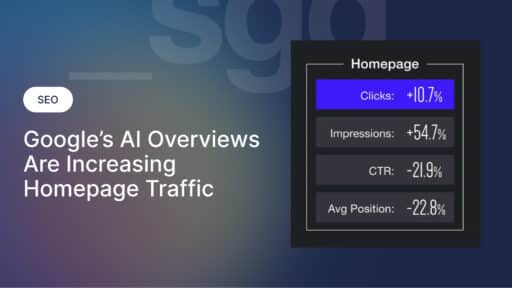Pillar Pages: The Content Structure For SEO Results
May 19, 2025 — Simon Kelly

SEO is about creating a system, a clear website structure that grows stronger, broader, and more powerful over time.
Great SEO performance isn’t just about optimising a few pages and hoping for the best.
Without the right foundation, even the best content can struggle to perform.
SEO is what connects your website to the right audience, builds your authority in your field, and ensures every new page you publish strengthens your position, not just today, but for the long term.
In this guide, we’ll walk you through how pillar pages, supporting content, and smart keyword planning work together to create a website that not only ranks but also leads.
You’ll see why structuring your site the right way from the start saves you time, avoids messy rework later, and sets you up for stronger, more sustainable results.
How Content Structure Powers SEO Growth
Think of your website like a house. Without a strong blueprint— a clear, strategic plan— it doesn’t matter how good your furniture (or content) looks.
The foundation needs to be built to last.
That’s exactly what SEO structure does: it gives your website the framework it needs to grow, rank, and stay competitive over time.
SEO (Search Engine Optimisation) is the process of improving your website so it ranks higher in search engine results.
It’s about making your site easier for search engines to understand and recommend, bringing the right visitors to your pages organically.
When you invest in strong SEO foundations:
- Your site becomes easy for both search engines and users to navigate.
- Your content naturally groups around clear, strategic themes, not random pages scattered everywhere.
- Every new page strengthens your site’s authority, instead of creating confusion or competition within your own content.
It’s not just about ranking a handful of keywords. It’s about building a connected system that earns trust, establishes expertise, and grows stronger with every new piece you add.
Why Pillar Pages Are the Backbone of SEO Strategy
A pillar page is a central hub on your website that covers a broad topic in depth, with links to related, more specific supporting content.
Think of it like this:
- Pillar: “The Four Pillars of SEO“
- Supporting Articles:
Pillar pages help you:
- Cover a full topic comprehensively.
- Improve internal linking and site structure.
- Signal to search engines that you are an expert on that subject.
They also make your site easier to navigate, giving users a clear path through your content without feeling lost or overwhelmed.
Build Your Structure Before You Build Your Pages
One of the biggest mistakes we see is websites creating random pages, blog posts, and landing pages without a clear SEO structure in place first.
Before you even start writing content, you should:
- Identify your core themes (what you want to be known for)
- Create a plan for pillar pages and supporting articles around those themes
- Map out internal links that connect everything logically
This content structure helps by:
- Making it easier for search engines to crawl and understand your site
- Helping users find related information faster
- Supporting future growth without causing confusion or duplication
It’s much easier (and much cheaper) to get this right from the start than to go back and “retrofit” SEO into a messy, disjointed website later.
Keyword Research: Know Your Themes Before You Write
Strong SEO doesn’t start with a blog post— it starts with keyword research and theme planning.
Here’s what smart keyword research involves:
- Finding the main keywords your audience is actually searching for.
- Grouping related keywords into clear topics and subtopics.
- Understanding search intent (what people really want to find).
When you know your themes first, you’re not just creating content— you’re building a strategic content ecosystem that supports your SEO and conversion goals.
Before you draft a single heading or paragraph, you should already know:
- What theme this piece supports.
- What pillar page it connects to.
- What related content it will link to.
That’s how you create content that fits into a larger, sustainable SEO strategy— not just isolated pages that are hard to rank or maintain.
Best Practices for Building a High-Performing SEO Structure
Here’s how we approach SEO structure at SGD:
1. Plan pillars and clusters first
Sketch out your main topics (pillars) and subtopics (supporting content) before you create any pages. This gives your content purpose and a clear structure from day one.
2. Use clear, consistent URLs
Keep URLs simple, keyword-rich, and logical (e.g. /digital-marketing/seo-tips/). This helps users and search engines understand where content belongs.
3. Link internally with purpose
Every supporting page should link back to its pillar page. This signals topic authority to Google and improves user navigation.
4. Write for users first, optimise for search second
Great content always comes first. SEO enhances content visibility but shouldn’t come at the cost of clarity or value.
5. Stay flexible as you grow
Your structure should allow for new topics and content without becoming cluttered. Build with scalability in mind.
SEO isn’t a “set and forget” task – it’s a living, evolving system.
When you start with a strong structure, every new page you add makes your site stronger.
Common SEO Mistakes That Hold Sites Back
Even websites with great content often struggle to rank if they make these avoidable mistakes:
- Publishing without a plan: Random blogs without connection to a core theme
- Ignoring internal links: Missing the opportunity to guide users and spread authority across your site
- Chasing keywords instead of building topics: Writing for dozens of disconnected keywords rather than owning a theme
- Forgetting user intent: Targeting keywords without considering what users actually want from the page
Avoid these early, and you’ll build an SEO foundation that works with you, not against you.
Ready to Build a Website That Ranks, Connects, and Converts?
At SGD, we don’t just create websites that look good— we build websites with strong SEO foundations that drive real, lasting growth.
By focusing on smart structures, pillar pages, and theme-first content strategies from the start, you’re not just building a site – you’re building a system that earns trust, drives traffic, and positions your brand as a true authority.
If you’re ready to create a website that’s not only beautiful but built to perform, we’re here to help.
Author

Simon Kelly
Simon Kelly is the CEO and Head of Growth at SGD. Simon started his first web agency in 2009 which he merged with the SGD team in 2023. With a strong background in digital strategy and a history of working with fast-growing Australian companies, including CyberCX, Envato and Agency Mavericks, he's passionate about using ethical digital marketing that delivers business value. Simon's experience includes coaching digital agencies, running digital marketing workshops, driving growth and excellence within the SGD team.
Unlock Weekly Insights To Improve Your Website
Want to improve your website and digital marketing? Sign up to Marketing Monday for practical, up-to-date strategies on SEO, Google Ads, and website performance—delivered weekly.
No fluff, just results-driven advice. Unsubscribe anytime.
Next Article
Where AI Content Goes Wrong
May 16, 2025Start a Project








